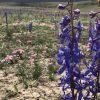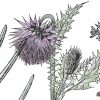The race to save an ecosystem
Locals speculate that Nevada’s largest fire may have started with a Fourth of July firework launched in a canyon. But no one really knows. The 2018 Martin Fire seemed small and innocuous, until a weather cell moved into northern Nevada. With winds suddenly pushing the blaze, it burned through sagebrush rangelands at 11 miles per hour. Firefighters couldn’t get ahead of it.
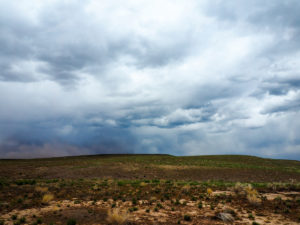
The Martin Fire doubled in size every day for four days, growing to be 57 miles long and 30 miles wide and burning 435,000 acres of Bureau of Land Management, US Forest Service, and private ranch land. Among the biggest losses in the fire were some of Nevada’s best sage grouse habitat and at least 35 sage grouse leks, where the birds stage their breeding dances. Ranchers, Elko County, and local hunters all chipped in for a reward to catch whoever started the fire, to no avail.
While fire is a natural part of the Great Basin, massive ones like the Martin Fire were unheard of a generation ago. An ecosystem that evolved with relatively rare fires, occurring every 30 to 100 years or more, can now see fires as often as every 5 years.
Bring it to the classroom: access a version of this article modified to an eighth grade reading level.
Not only are rangeland fires more frequent in the Great Basin today, they are also larger. Historically, rangeland fires grew to the order of hundreds to thousands of acres. Today, they regularly escalate into megafires, the term firefighting experts at the Interagency Fire Center in Boise coined for blazes exceeding 100,000 acres. Megafire captures the disproportionate destruction and expense of those very large fires.
According to data from the Bureau of Land Management, a new trend is emerging where range fires now tend to burn more acres each year than forest fires. That was the case in 13 years out of the last 19. Yet public attention and resources devoted to even mega-sized range fires remain relatively scant compared to forest fires.
Several major changes are stoking Great Basin megafires. For one, a long history of fire suppression has led to more continuous shrubby cover of sagebrush and juniper, and less of the native perennial grasses that slowed fires in the past. Two, cheatgrass (Bromus tectorum), an invasive annual that most of us take for granted in pastures, along roadsides, or poking at our ankles through our socks, is covering more and more of the West. Plus, the Great Basin has been getting warmer over the last 100 years, a trend that favors cheatgrass.
Not only is cheatgrass prolific, it also makes rangeland more likely to burn. As cheatgrass grows between native shrubs and grasses it coats the landscape in a fine, tissue paper-like fuel. When a lightening strike or errant campfire sparks a fire, slow-growing sagebrush perishes, while cheatgrass seeds persist, ready to germinate quickly and outcompete native grasses. After multiple fire cycles, sometimes fewer, cheatgrass reduces formerly diverse and complex shrublands into fire-prone grassland savannas. This pattern has locked the Great Basin in a vicious cycle of burning, which leads to more cheatgrass, and then more fire.
The sweeping scale of recent rangeland fires and the speed with which they are changing the Great Basin drives home the ecological, economic, and social consequences of invasive species run amok. Ranchers, rangeland scientists, and managers are waking up to the rapid pace at which cheatgrass and fire are altering the Great Basin’s sagebrush ecosystem, and now they are racing to save what remains.
“It’s in its own class among invasive species,” says Jeremy Maestas, an ecologist who works on sagebrush ecosystem conservation for the US Department of Agriculture’s Sage Grouse Initiative. “I think what people have to realize is just the sheer disruptive nature of that plant on western range. If you care about the American West and the rural way of life, this is going to upend everything.”
![]()
After thousands of years making a successful living alongside people in Europe and Asia, cheatgrass is perfectly suited to exploit the human footprint in North America. Since arriving from Europe nestled in packing material in the late 1800s, it has spread to all 50 states and thrives especially well in the western US.
Range managers in the early to mid 1900s fretted over cheatgrass in the scientific literature, say Maestas. While sagebrush and native bunch grasses are long-term investors, taking years to put down deep roots after a fire or other disturbance, cheatgrass moves fast and gets rich quick. As a winter annual that can germinate in the fall or spring, it has a head start on native plants that are dormant during those times. Then it dries out by June, producing as many as 5,000 seeds per plant.
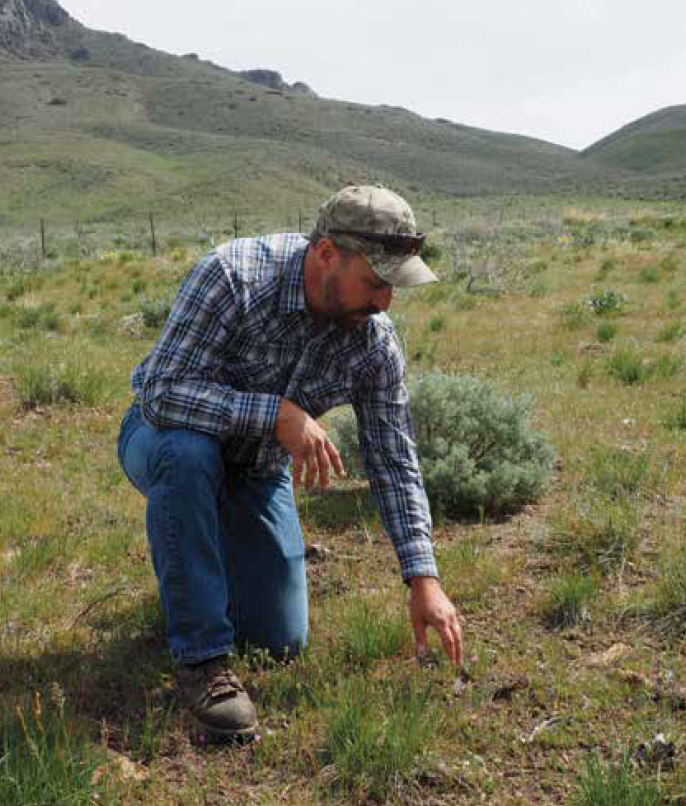
By the 1930s westerners rationalized that they could learn how to live with cheatgrass. It does have some spring forage value for cattle and it was too hard to control anyway. Aldo Leopold saw this complacency and sounded an alarm about allowing cheatgrass to subtly spread unabated throughout rangelands in Utah and Oregon.
“It is impossible to fully protect cheat country from fire,” he wrote in Sand County Almanac. “As a consequence, the remnants of good browse plants, such as sagebrush and bitterbrush, are being burned back to higher altitudes, where they are less useful as winter forage.”
As Leopold predicted, overgrazing and drought made the Great Basin vulnerable to initial cheatgrass invasion, and his fears about failing to control the weed came to pass. Today, cheatgrass makes up more than 15 percent of vegetation cover over 52 million acres of the Intermountain West. That means about a third of the region is covered in fine fuel that dries out just as fire season begins. Conversion to cheatgrass monoculture is most severe in lower elevation regions of the Great Basin and on the Snake River Plain of Idaho. It’s also starting to spread in the Northern Rockies, showing up in places people never expected to see it.
Cheatgrass cover in the west has increased since 2000, according to Maestas. Along with that, fire frequencies in the Great Basin are now up to four times historic levels. The fire season is also longer. And perhaps most striking, fires are much larger.
“When people’s houses aren’t burning down, it’s really hard to motivate people at a large enough scale to do something about it,” says Maestas. That’s changed, though, as the cheatgrass and fire cycle has ramped up. About 15 million acres of sagebrush burned from 2000 to 2018, mostly in the Great Basin. Nine million of those acres burned between 2014 and 2018 as fires over 100,000 acres are becoming more common. “People’s ranches and allotments are burned out regularly, and they have nowhere to go with their livestock. Now we’re seeing consequences of not taking action.”
As the economic, ecological, and social fallout of inaction against cheatgrass have come into much clearer resolution, so has the sense of urgency about combating it. Jon Griggs, the manager of the Maggie Creek Ranch near Elko, is among the Nevadans who have experienced the many dimensions of those consequences. One is the emotional toll of seeing livestock get burned over and watching in fear as flames have rushed him on the ranch.
Then there are the tangible consequences for ranching communities that rely on a healthy, functioning sagebrush ecosystem. When ranchers need to stay off their federal grazing leases after fire, they can spend hundreds of thousands of dollars on feed or they may have to sell their cattle. “Fire and the aftermath of fire might be the biggest challenge that we have,” says Griggs. “It does put people out of business. It changes our livelihood, sometimes forever.”
In addition to the direct threat of being burned over, ranchers and wildlife managers worry about the threats cheatgrass and fire pose to long-term conservation goals in the Great Basin. For instance, when mule deer arrive to their winter range after a fire, they can’t find the sagebrush and bitterbrush they rely on, leading to poor reproductive success and outright starvation. Fires in northern Nevada have taken a toll on the herds. For instance, in the early 1990s one of northern Nevada’s prime mule deer areas hosted an estimated 20,000 individuals. By 2018 there were fewer than 10,000 mule deer there. “Most in our agency attribute that major decline in population to wildfires that have burned the majority of the winter range for this herd,” says Cody Schroeder, the Nevada Department of Wildlife’s mule deer staff biologist.
While the fates of 350 wild animal species are tied to healthy sagebrush, sage grouse have driven much of the policy and wildlife politics in the ecosystem. So ranchers like Griggs have viewed the potential endangered species listing of sage grouse as an opportunity to do conservation work that benefits both cattle grazing and wildlife. But fire can sweep through to undermine that work in a matter of hours.
After a burn, sage grouse will first return to the lek, even if it’s black and barren, and try to perform their mating rituals, says Alan Jenne, the Nevada Department of Wildlife’s habitat division chief. Sage grouse exposed to open sky are likely to be eaten by predators, so they will abandon that lek rather than mate. If they do mate, nesting success in cheatgrass is low because chicks are exposed to predators like ravens. Even when chicks survive, the birds need to find annual flowering plants to eat. But if cheatgrass has taken over, those forbs won’t be growing, and the birds will need to move to a new area. At that point, “they’re kind of on this death march to get to something more productive,” says Jenne.
When the Martin Fire took out at least 35 sage grouse leks, it was like watching years of collaborative efforts to keep sage grouse populations healthy and off the endangered species list go up in smoke. Griggs calls fire the concern when it comes to potential sage grouse listing. “Three quarters of a million acres in two fires last year in the north end of this state burned up the best habitat we got,” he says. “Thinking about listing, just those two fires really concern me.”
Those concerns are well supported, and shared by the sagebrush conservation community. If current wildfire trends in the Great Basin continue, model projections from a 2016 study published in the Proceedings of the National Academy of Sciences point to a 43 percent reduction in sage grouse populations over the next three decades.
![]()
After the Martin fire, sagebrush skeletons poke out of black soil and wind whips up sooty dust clouds on the denuded horizon. Returning this landscape to a place where sage grouse chicks can once again thrive means overcoming all the advantages cheatgrass has in an arid and disturbed landscape.
Sagebrush habitat restoration is an evolving art and science. While we see the aboveground results, a key component of the battle against cheatgrass happens belowground. Research is showing that maintaining or reestablishing the extensive root systems of native plants keeps shallow-rooted cheatgrass from getting a toehold.
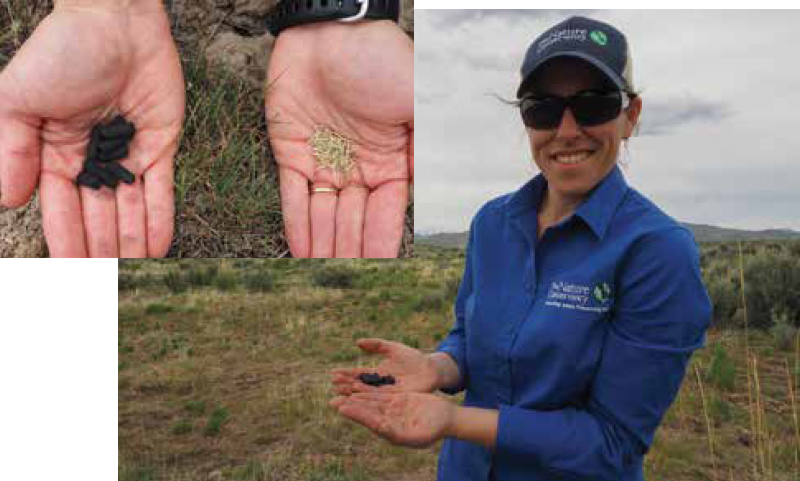
Nevada chapter, displays squirreltail seeds coated in pods of activated charcoal, a technique researchers are experimenting with in hopes of helping native plants compete with cheatgrass. (Photos by Sarah Keller.)
People restoring sagebrush ecosystems rely on the mantra of “right seed, right place, right time” to guide their work. The saying is shorthand for the complexities of reestablishing native plants in a harsh, cold desert climate where it rains fewer than 10 inches a year. Restoration in vast, remote areas is resource-intensive, logistically difficult, and subject to the vagaries of desert weather. For instance, it took nine semi trucks carrying up to 30,000 pounds of seed to replant after the Martin Fire, but burned over, snowy, wet dirt roads needed to be repaired first. In the end, it’s impossible to touch every acre of a 435,000-acre burn scar.
Most invasive weed management programs address less than 10 percent of infested acres, yet invasive plants can spread at a rate of 15 to 35 percent per year, according to the Western Association of Fish and Wildlife Agencies’ 2017 report on wildfire and invasive plants in the sagebrush biome. Failing to shift those numbers in favor of sagebrush, bunchgrasses, and native forbs has dire consequences for a sagebrush ecosystem that’s already 41 percent gone. “It’s hard for me personally, the notion that we could almost lose this ecosystem in its entirety within my lifespan,” says Liz Munn, rangeland ecologist for the Nature Conservancy’s Nevada chapter.
To help prevent that dire outcome, Munn is collaborating with a number of researchers who hope to improve restoration success by developing technologies to help native plants compete. One technique is trying to give native grasses a head start over cheatgrass. To do this, researchers coat bluebunch wheatgrass and squirreltail seeds in pods of activated charcoal. Those pellets protect them from the herbicides that beat back cheatgrass, giving them a competitive advantage once they germinate. Other seed coatings help bet hedge against variable weather by letting native grasses germinate earlier or later than they would on their own.
“Ultimately we’re sort of mimicking what cheatgrass does,” says Munn. “Cheatgrass needs a little credit here, really. It’s well adapted to this environment. It germinates quickly. It germinates often. So we’re trying to basically give native seeds the same advantages that cheatgrass already has.” Strategies like this are part of a larger suite of techniques the Nature Conservancy and USDA Agricultural Research Service are borrowing from precision agriculture. These precision restoration technologies, as they are called, are designed to boost the odds of successful restoration. They include different kinds of seed coatings, and also mapping tools that help managers make better decisions about which restoration practices to use and where and when to use them.
Seed coating techniques have been successful in the lab, so the Nature Conservancy is now working with collaborators throughout the West to test them in the real world. One of those places will be on mule deer winter range that the Nevada Department of Wildlife is restoring after the 2017 Snowstorm fire.
While the current seed-coating test isn’t large enough to positively affect mule deer habitat yet, it could contribute to the success of ongoing restoration efforts in the future. Mule deer herds near Elko have seen dramatic population declines, largely from loss of winter range to cheatgrass and fire. “We have populations that are solely reliant upon our past efforts at fire rehab at different times of the year,” says Caleb McAdoo, a habitat biologist with the Nevada Department of Wildlife.
That’s one reason why it’s important to protect intact habitats and hard-earned restored areas from fire. Currently the best option available for that is fuel breaks to keep fires from growing so large in the first place. Managers often construct those wide bands of roadside vegetation by seeding with nonnative plants that grow successfully in semiarid climates, like forage kochia, a shrubby perennial with thin leaves and succulent, slender stems. Ideally, that green barrier is moist enough and wide enough to calm a range fire.
Fuel breaks remain a controversial technique because they require intentionally disturbing an area and planting nonnative vegetation. As a 2018 US Geological Survey report points out, substantial scientific evidence supporting their effectiveness, or documenting their impacts, is lacking. But anecdotally, strategic fuel break placement has protected key habitats or restored areas. That was the case in southern Idaho when projections showed the 2017 Centennial Fire could reach 142,000 acres. After a fuel break slowed the blaze, firefighters gained control of it before it reached 20,000 acres.
Fuel breaks, and the scale with which managers need to deploy them, underscore the heavy-handed actions required once an invasive species reshapes how a large landscape functions. The Bureau of Land Management is now proposing to build 11,000 miles of them in Nevada.
“We’re trying to figure out what the sweet spot is of basically fragmenting this landscape enough to stop these megafires and to try and get a foothold on some of these restoration opportunities, versus too much fragmentation that is ecologically impactful,” say Jolie Pollet, the BLM’s division chief for fire planning and fuels management, based in Boise.
![]()
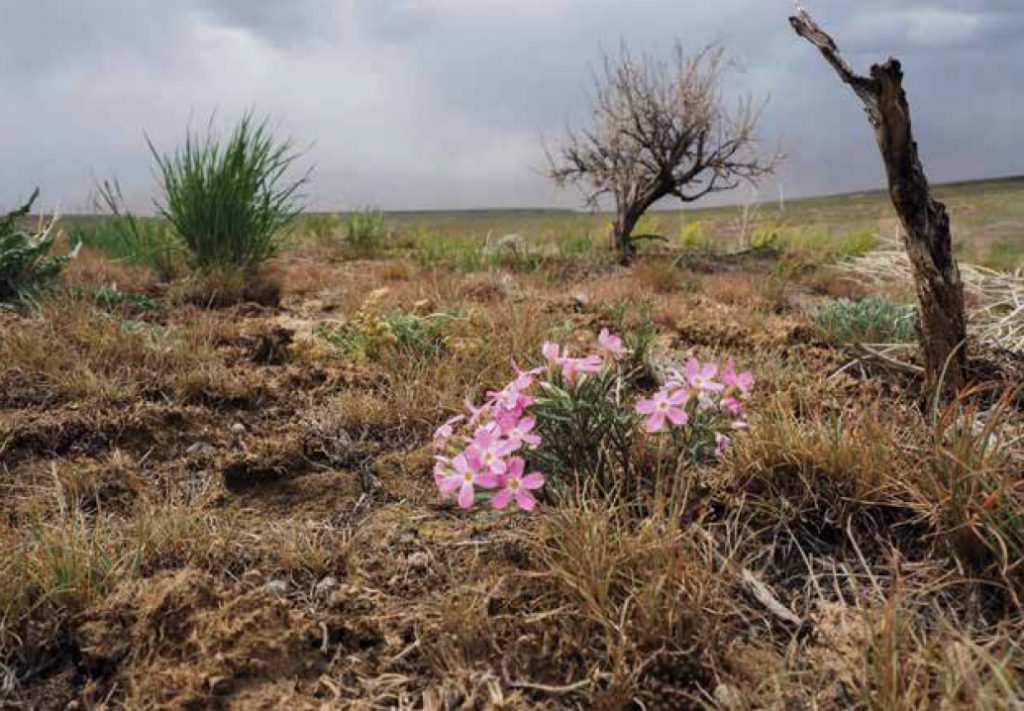
Beyond containing Great Basin megafires and restoring habitat where cheatgrass is already widespread, managers are trying to get ahead of the weed before it takes over in new regions.
We go into areas that are broken and try to fix it,” says Maestas. “We need to get out of that model. Invasive species management 101 tells you you’ve always got to prevent first.” That means doing what Leopold implored westerners to do nearly 100 years ago: go into areas where cheatgrass invasion is just starting, like the Rocky Mountains, and find strategic ways to eradicate or control it.
For instance, until relatively recently, ecologists considered Wyoming too northerly, and too high elevation, for cheatgrass to really take off there. Now that they are finding large infestations above 9,000 feet, it’s clear that even northern states are vulnerable. With 37 percent of the West’s sage grouse population, the most leks, and the most sagebrush of any state, the stakes are high for controlling cheatgrass in Wyoming.
In places like the Great Basin, where prevention work didn’t happen soon enough, the challenge is learning how to live with cheatgrass. “But that doesn’t have to be the future for a lot of West,” says Maestas.
“We still have a lot of land that is in really good shape, but it’s threatened by invasion. I think it’s a cultural mindset, that people have to be ready to respond quickly before there’s an obvious problem.”
Text and photos by Sarah Jane Keller
Sarah Jane Keller is a freelance science and environmental journalist based in Bozeman, Montana. Find more of her work at sjanekeller.com.
![]()
Further Reading
B.A. Bradley et al., “Cheatgrass (Bromus tectorum) distribution in the Intermountain Western United States and its relationship to fire frequency, seasonality, and ignitions,” Biological Invasions 20 (2018) https://doi.org/10.1007/s10530-017-1641-8.
P.S. Coates, et al., “Wildfire, climate, and invasive grass interactions negatively impact an indicator species by reshaping sagebrush ecosystems,” Proceedings of the National Academies of Sciences 113 (2016), https://doi.org/10.1073/pnas.1606898113.
D.S. Pilliod, J.L. Welty, and R.S. Arkle, “Refining the cheatgrass–fire cycle in the Great Basin: Precipitation timing and fine fuel composition predict wildfire trends,” Ecology and Evolution 7 (2017), https://doi.org/10.1002/ece3.3414.
K.A. Snyder, et al., “Effects of changing climate on the hydrological cycle in cold desert ecosystems of the Great Basin and Columbia Plateau,” Rangeland Ecology and Management 72 (2019), https://doi.org/10.1016/j.rama.2018.07.007.
Wildfire and Invasive Plants in the Sagebrush Biome: Challenges That Hinder Current and Future Management and Protection. WAFWA Wildfire/Invasive Species Working Group. 2018.

